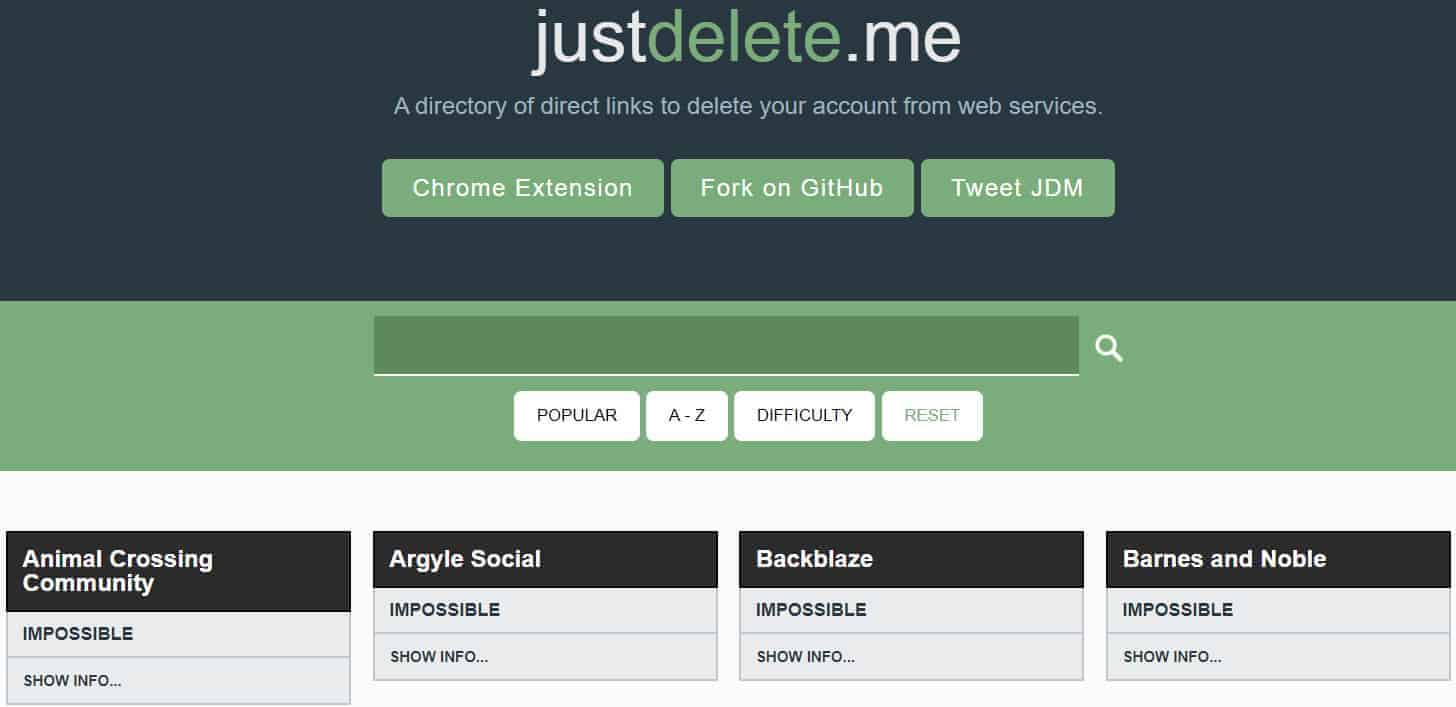Take Control Of Your Online Data: How To Delete Your Internet Presence

Table of Contents
Understanding Your Online Presence
Before you begin deleting your internet presence, it's essential to understand the extent of your digital footprint. This involves identifying where your personal data resides and assessing the potential risks associated with it.
Identifying Your Digital Footprint
Your digital footprint encompasses all the information available about you online. This includes:
- Social Media Profiles: Facebook, Instagram, Twitter, LinkedIn, TikTok, etc. Consider posts, photos, comments, likes, shares, and even your location data.
- Search Engine Results: What appears when you search your name on Google, Bing, or other search engines?
- Online Forums and Communities: Posts, comments, and usernames on forums like Reddit, Stack Overflow, or niche community websites.
- Online Purchases and Transactions: Data from e-commerce sites, online banking, and subscription services.
- Reviews and Ratings: Your contributions to review sites like Yelp, Amazon, or TripAdvisor.
- Public Records: Information available through government websites or public databases.
A thorough assessment of your online presence is vital for effective data removal.
Assessing the Risks
A large and poorly managed digital footprint exposes you to various risks, including:
- Identity Theft: Personal information can be misused to open fraudulent accounts or commit other crimes.
- Stalking and Harassment: Online information can be used to track your movements and activities, leading to unwanted attention.
- Employer Scrutiny: Potential employers may review your online presence during the hiring process, impacting your job prospects.
- Reputation Damage: Negative or outdated information can damage your professional reputation.
- Targeted Advertising: Extensive online data is used to profile you and show you targeted ads, potentially intruding on your privacy.
Deleting Data from Social Media Platforms
Social media platforms are often the primary source of online data. Deleting your accounts requires a careful process, varying slightly across platforms.
Step-by-Step Guide for Each Platform
Here's a simplified guide for deleting accounts on major social media sites. Remember to always back up any important data before proceeding:
- Facebook: Go to Settings & Privacy > Your Facebook Information > Deactivation and Deletion.
- Instagram: Go to your profile > Settings > Account > Delete Your Account.
- Twitter: Go to Settings and privacy > Your account > Deactivate your account. Note that Twitter doesn't offer a full account deletion option.
- LinkedIn: Go to Settings & Privacy > Account Management > Close Your Account.
- Other platforms: Consult the help section of each platform for specific instructions. Remember that "deactivation" usually means temporarily suspending your account, while "deletion" is permanent.
Dealing with Third-Party Apps and Integrations
Many apps connect to your social media accounts. Revoking access is crucial for protecting your data:
- Facebook: Settings & Privacy > Settings > Apps and Websites.
- Instagram: Settings > Security > Apps and Websites.
- Twitter: Settings and privacy > Apps and sessions.
- Other platforms: Check each platform's settings for app management options.
Removing Your Information from Search Engines
Search engines index vast amounts of online data. While you can't completely erase your online presence, you can work to remove outdated or inaccurate information.
Google's Removal Tool
Google provides a data removal tool to request the removal of URLs containing your personal information:
- Submit a removal request through Google's removal tool. Provide clear reasons why the information should be removed, such as outdated contact details or doxxing.
- Be prepared for Google to potentially deny your request if the content is deemed newsworthy or publicly available.
Removing Information from Other Search Engines
Other search engines, like Bing and DuckDuckGo, have their own policies regarding data removal. While the processes may vary, generally, you can contact their customer support or refer to their help center for information on removing your data.
Beyond Social Media and Search Engines
Your digital footprint extends beyond social media and search engines. Consider these areas:
Online Forums and Communities
Many online forums and communities allow you to delete your posts and accounts. Check the platform's specific guidelines and options for removing your contributions.
Review Sites and Online Shopping Platforms
Review sites like Yelp and Amazon generally offer options for editing or deleting your reviews. Check each platform's user guidelines for instructions. Similarly, many online shopping platforms have options for managing your purchase history and personal details.
Data Brokers and Information Aggregators
Data brokers collect and sell your personal information. You can try opting out of their data collection, although the process can be complex and may not guarantee complete removal. Many websites provide resources to assist with this, for instance, the opt-out page at the DMA's website.
Conclusion
Taking control of your online data requires a proactive approach. By following these steps to delete your internet presence, you can significantly minimize your digital footprint and enhance your online privacy. Remember, deleting your internet presence is an ongoing process; regular checks and updates are crucial. Start reclaiming your online privacy today by taking steps to delete your internet presence. Don't wait – begin managing your online data and delete your internet presence now! Share this article with others who want to take control of their digital lives.

Featured Posts
-
 L Integrale De Bfm Bourse Marches Financiers Du 24 Fevrier 2024
Apr 23, 2025
L Integrale De Bfm Bourse Marches Financiers Du 24 Fevrier 2024
Apr 23, 2025 -
 Secret Service Ends Probe Into Cocaine Found At White House
Apr 23, 2025
Secret Service Ends Probe Into Cocaine Found At White House
Apr 23, 2025 -
 How To Delete Your Online Accounts And Data Safely And Securely
Apr 23, 2025
How To Delete Your Online Accounts And Data Safely And Securely
Apr 23, 2025 -
 The Impact Of Wildfires On The Gambling Industry The Los Angeles Case Study
Apr 23, 2025
The Impact Of Wildfires On The Gambling Industry The Los Angeles Case Study
Apr 23, 2025 -
 Record Breaking Speed Brewers 9 Stolen Bases Rewrite Team History
Apr 23, 2025
Record Breaking Speed Brewers 9 Stolen Bases Rewrite Team History
Apr 23, 2025
